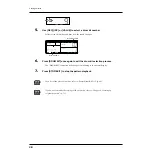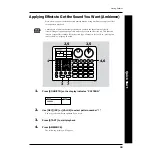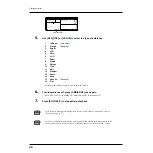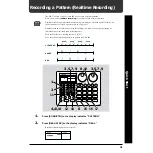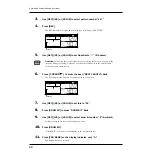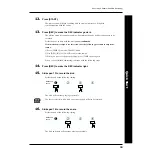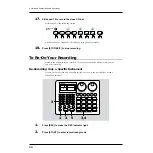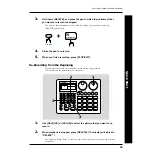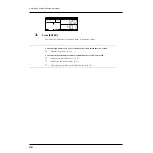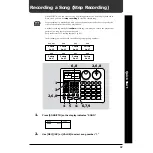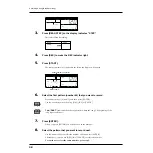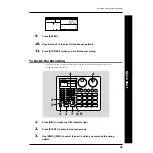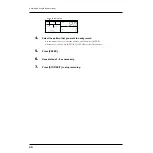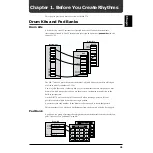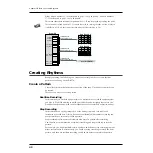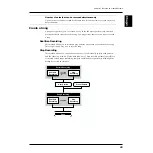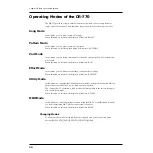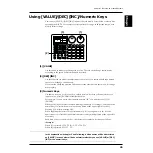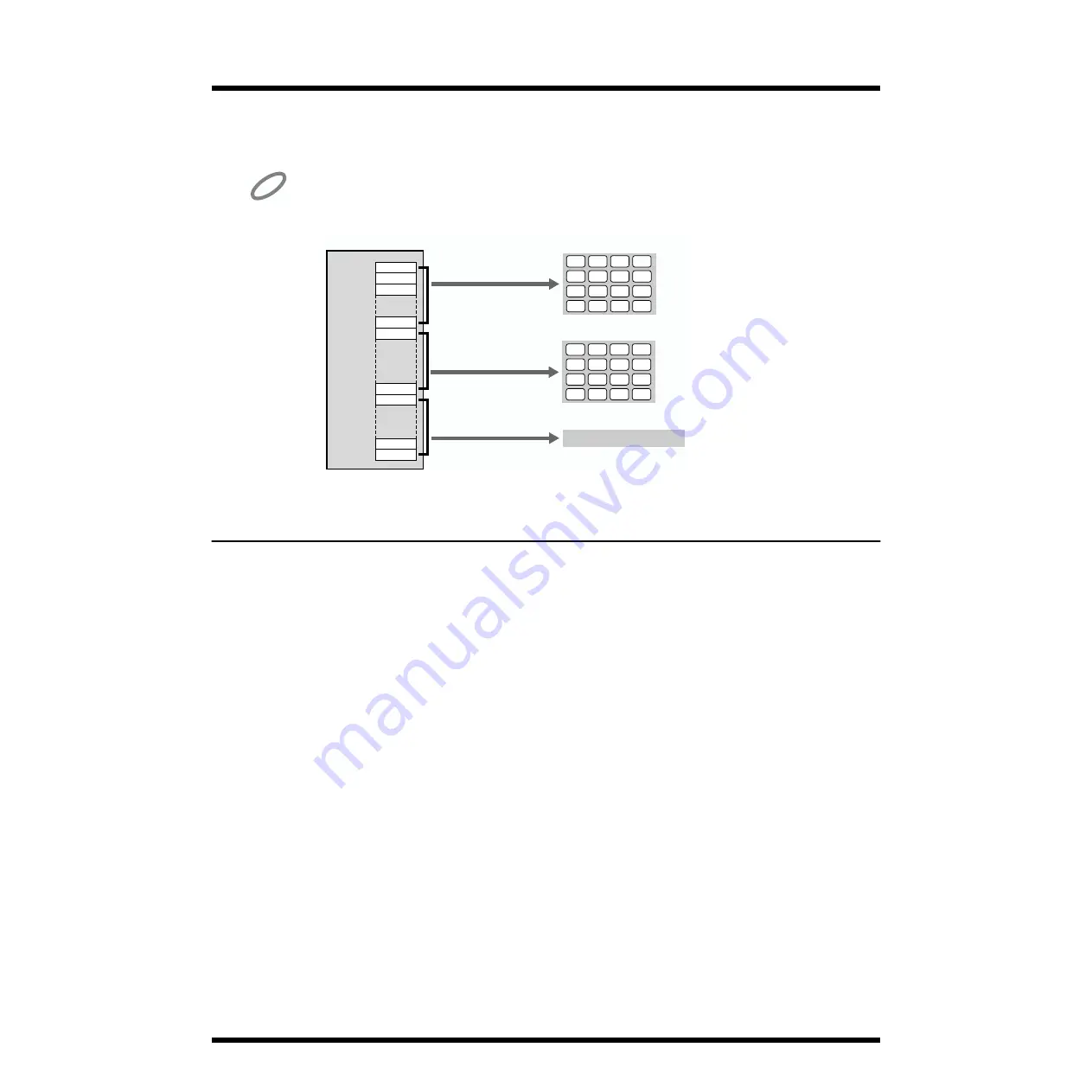
42
Chapter 1. Before You Create Rhythms
Drum kit pad numbers 1–16 correspond to pad 1–16 of pad bank A, and pad numbers
17–32 correspond to pad 1–16 of pad bank B.
This means that the instruments of pad numbers 1–32 can be played by striking the pads.
The instruments of pad numbers 33-55 cannot be played by striking the pads, but can be played
via MIDI (p. 85). And, they can be recorded using the step recording (p. 58).
fig.101-03a
Creating Rhythms
Broadly speaking, the following two steps are necessary in order to create rhythm
patterns for one song on the DR-770.
Create a Pattern
Create (record) a musical pattern for a portion of the song. Up to 400 user patterns can
be created.
There are two ways to record a pattern.
Realtime Recording
In this method you strike the pads in time to a metronome to record the pattern just as
you play it. Even if the timing at which you strike the pads is slightly inaccurate, the
Quantize function can be used to ensure that the notes are recorded at precise timings.
Step Recording
In this method you specify things such as the timing (step) and volume of each
instrument, for each note. Users who are not comfortable with realtime recording can
use this method to accurately record a pattern.
Step recording is also used to edit individual notes of a pattern after recording.
You can also use a combination of realtime recording and step recording to record a
pattern.
For example, you might realtime-record a pattern, and then use step recording to make
minor corrections to it. Alternatively, you could use step recording to record the basic
pattern, and then use realtime recording to add ad-lib notes to complete the pattern.
NOTE
Drum Kit
1 (A01)
2 (A02)
3 (A03)
33 (– 01)
54 (– 22)
55 (– 23)
16 (A16)
17 (B01)
32 (B16)
1
2
3
4
5
6
7
8
9
10
11
12
13
14
15
16
Instrument of
Pad number 1–16
Pad Bank A
1
2
3
4
5
6
7
8
9
10
11
12
13
14
15
16
Instrument of
Pad number 17–32
Pad Bank A
Instrument of
Pad number 33–55
Control via MIDI
Содержание Dr. Rhythm DR-770
Страница 119: ...119 MEMO...

